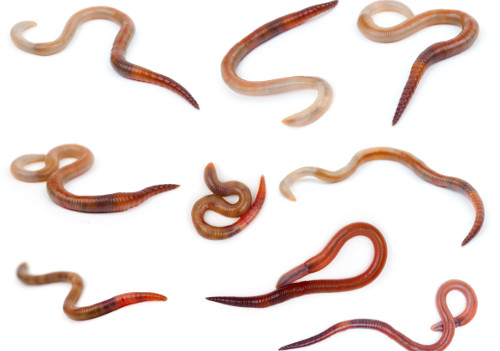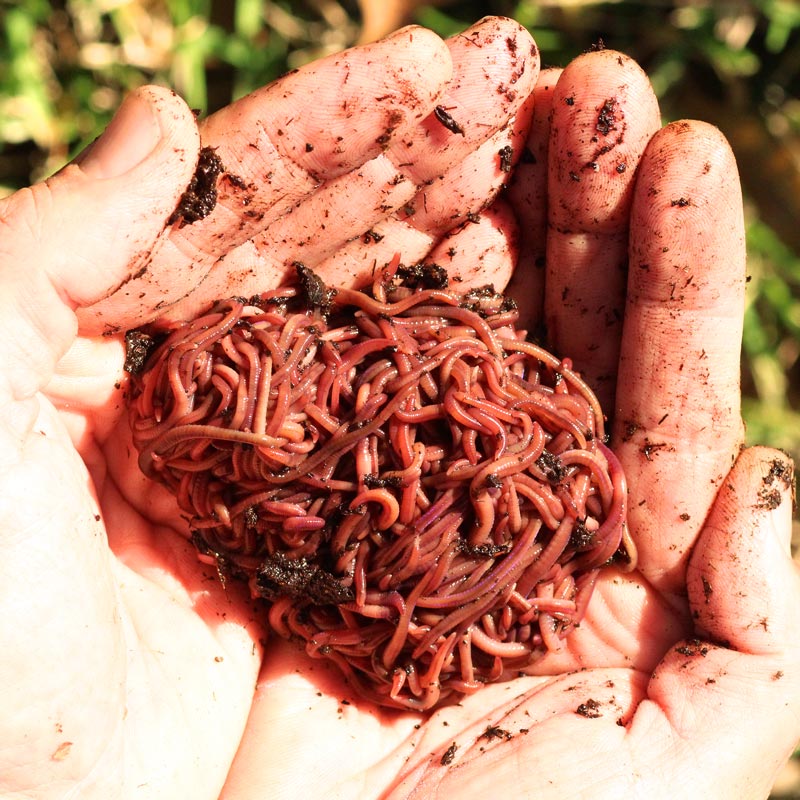Organic Composting with Red Wiggler Worms - Boost Your Yard's Development
Organic Composting with Red Wiggler Worms - Boost Your Yard's Development
Blog Article
Optimizing the Perks of Red Wiggler Worms: A Comprehensive Manual for Home Gardeners and Urban Farmers
In the world of lasting horticulture techniques, red wiggler worms stand as unsung heroes, silently changing organic waste right into nutrient-rich castings that can work wonders for dirt health. As home gardeners and metropolitan farmers progressively look for cost-effective and ecologically friendly means to enhance their gardens, the possible advantages of utilizing the power of red wigglers can not be overemphasized. From lessening kitchen waste to growing healthier plants, the use of these humble animals offers a myriad of benefits. By exploring the ins and outs of how to successfully look after and make best use of the advantages of red wiggler worms, individuals can open a wealth of chances for enhancing the sustainability and performance of their gardening ventures.
Recognizing Red Wiggler Worms
Red Wiggler worms, renowned for their reliable composting capabilities, are a varieties of earthworms widely utilized in vermiculture techniques. These worms, scientifically known as Eisenia fetida, prosper in decaying organic material, making them ideal candidates for composting (Red Wiggler Worms). Red Wigglers are voracious eaters, with the ability of consuming their own weight in natural waste daily. Their digestion process breaks down raw material into nutrient-rich spreadings, which are an important resource for enhancing soil and advertising plant development.
One key quality of Red Wiggler worms is their reproductive rate. These hermaphroditic creatures have both male and female reproductive organs, enabling them to recreate swiftly under positive problems. A mature Red Wiggler can create multiple spawn in a brief period, making sure a steady population within a composting system.

Establishing a Worm Container
When establishing a worm bin for vermiculture objectives, proper prep work and focus to information are important for developing a helpful atmosphere for Red Wiggler worms,. Begin by picking a suitable container for your worm container. This can be a plastic or wood container with a lid to maintain wetness degrees and secure the worms from light. Guarantee that the bin has water drainage openings near the bottom to stop waterlogging.

Area the worm container in a trendy, dark location far from direct sunshine and severe temperature levels. Regularly keep track of the moisture levels, adding water if the bedding really feels flaky or dry. Feed the worms a well balanced diet of fruit and vegetable scraps, avoiding citrus fruits, onions, and spicy foods. By adhering to these actions, you can establish a growing worm container that will efficiently process natural waste right into nutrient-rich vermicompost for your yard.
Feeding and Maintaining Worms
Making certain a healthy and balanced diet is vital for the health and helpful site wellness and performance of Red Wiggler worms in a vermiculture system. It is important to avoid feeding them citrus fruits, onions, garlic, dairy products, meat, and oily foods as these can be dangerous to the worms or trigger unpleasant odors in the bin.
Correct dampness levels are also crucial for the health of Red Wiggler worms. By carefully monitoring their diet, moisture, and ecological conditions, home gardeners and metropolitan farmers can sustain a healthy and productive Red Wiggler worm populace for composting purposes.
Harvesting Worm Castings
To successfully remove nutrient-rich worm castings from the vermicompost, an organized harvesting process is vital for maximizing the composting advantages. Red Wiggler Worms. The primary step in collecting worm spreadings is to encourage the worms to migrate away of the container. This can be attained by positioning fresh food scraps on one side and leaving the opposite uninterrupted for a few days. As soon as most of worms have relocated to the side with fresh food, the castings can be collected from the opposite side.
After the castings have actually been gathered, it is essential to separate any kind of remaining worms from the spreadings to prevent damaging them throughout storage space or application. One reliable approach is to create conical piles of spreadings under intense light. Worms will intuitively move far from the light, permitting for simple separation and elimination.
Finally, the collected worm castings should be stored in an amazing, dark, and dry place to preserve their quality and effectiveness as a nutrient-rich dirt modification. By adhering to these actions, home gardeners and metropolitan farmers can maximize the benefits of red wiggler worms in their vermicomposting systems.
Using Worm Castings in Horticulture
The consolidation of nutrient-rich worm spreadings into yard soil can considerably boost plant growth and general dirt wellness. Worm spreadings, additionally called vermicast, are a natural plant food produced by red wiggler worms as they break down raw material. These spreadings are abundant in vital nutrients like nitrogen, phosphorus, potassium, and advantageous germs check that advertise plant growth and improve dirt structure.
When using worm spreadings in gardening, it is necessary to mix them extensively into the dirt or utilize them as a top clothing around plants. The slow-release nature of worm spreadings guarantees a consistent supply of nutrients to plants in time, decreasing the danger of nutrient leaching and promoting long-lasting soil fertility. Additionally, worm castings help improve soil oygenation, water retention, and microbial task, producing a healthy and balanced setting for plant roots to thrive.

Verdict
In conclusion, the application of red wiggler worms in home horticulture and city farming can significantly profit soil wellness and plant growth. By recognizing exactly how to establish and keep a worm bin, feed the worms correctly, and harvest their nutrient-rich spreadings, garden enthusiasts can make the most of the advantages of these earthworms. Incorporating worm spreadings right into gardening techniques can improve soil fertility and total plant performance. Generally, red wiggler worms offer a sustainable and reliable service for enhancing yard and farm yields.
In the realm of lasting horticulture techniques, red wiggler worms stand as unhonored heroes, silently changing organic waste right into nutrient-rich spreadings that can function marvels for dirt health and wellness.When developing a worm container for vermiculture functions, proper prep work and interest to detail are necessary for creating a helpful setting for Red Wiggler worms. The initial action in harvesting worm spreadings is to urge the worms to migrate to one side of the bin. Worm castings, likewise known as vermicast, are a natural fertilizer produced by red wiggler worms as they damage down organic issue. By recognizing how to establish up and keep a worm bin, feed the worms properly, and gather their nutrient-rich castings, gardeners can optimize the benefits of these earthworms.
Report this page